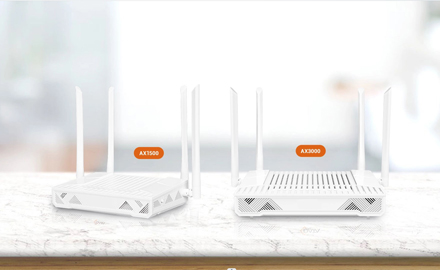An Optical Line Terminal (OLT) is a crucial component in a passive optical network (PON) architecture, which is widely used for delivering broadband services to subscribers. The OLT serves as the gateway between the service provider's network and the customer premises equipment (CPE). It aggregates and manages traffic from multiple subscribers, controls the flow of data, and communicates with Optical Network Units (ONUs) located at the subscriber's end.

A "Small Capacity OLT" refers to an OLT with a limited capacity compared to larger-scale OLTs commonly deployed in more extensive networks. Despite its smaller size, it performs similar functions, albeit on a smaller scale. Understanding the architecture, functionality, and significance of a Small Capacity OLT requires delving into various aspects of PON technology and its components.
PON Architecture Overview:
PON is a fiber-optic network architecture that enables the delivery of broadband services over a single optical fiber to multiple subscribers. It consists of three primary components:
1. Optical Line Terminal (OLT): Located at the service provider's central office, the OLT interfaces with the provider's backbone network and manages communication with ONUs.
2. Optical Network Unit (ONU): Installed at the subscriber's premises, the ONU serves as the interface between the optical network and the subscriber's devices, such as modems, routers, or set-top boxes.
3. Passive Optical Splitters: These are passive devices deployed in the field to split the optical signal from the OLT to multiple ONUs without requiring power.

Functionality of Small Capacity OLT:
A Small Capacity OLT shares fundamental functionality with larger OLTs but is designed for deployment in scenarios with lower subscriber density or where scalability demands are not as high. Its key functions include:
1. Traffic Aggregation: The Small Capacity OLT aggregates data traffic from multiple ONUs, consolidating it into a single stream for transmission over the service provider's network.
2. Quality of Service (QoS) Management: It ensures that different types of traffic (e.g., voice, video, data) receive appropriate priority and quality of service guarantees, thereby optimizing network performance.
3. Subscriber Management: The OLT is responsible for provisioning and managing subscriber connections, including authentication, bandwidth allocation, and service provisioning.
4. Fault Management: It monitors the network for faults and abnormalities, facilitating rapid fault detection, isolation, and resolution to maintain service reliability.
5. Security: The OLT implements security measures to protect the network from unauthorized access, data breaches, and other security threats.
6. Performance Monitoring: It collects performance metrics and statistics to assess network health, identify potential bottlenecks, and optimize resource utilization.

Design Considerations for Small Capacity OLT:
When designing a Small Capacity OLT, several factors need to be considered to ensure optimal performance and cost-effectiveness:
1. Subscriber Density: The OLT's capacity should align with the expected number of subscribers it will serve, considering factors such as population density, service uptake rates, and growth projections.
2. Scalability: While a Small Capacity OLT may cater to a smaller subscriber base initially, it should be scalable to accommodate future growth by supporting additional ONUs and expanding its capacity as needed.
3. Cost Efficiency: The OLT's design should balance performance requirements with cost considerations to provide a cost-effective solution for deployments in smaller-scale networks or niche markets.
4. Form Factor and Power Consumption: As a smaller-scale device, the Small Capacity OLT should have a compact form factor and low power consumption to minimize space requirements and operating costs, especially in deployments with limited physical infrastructure.
5. Flexibility and Compatibility: It should support industry-standard interfaces and protocols to ensure compatibility with a wide range of ONUs and network management systems, facilitating interoperability and ease of integration.
6. Reliability and Redundancy: Robustness and reliability are critical, even in smaller deployments. The OLT should incorporate redundancy features such as hot-swappable components, dual power supplies, and hardware/software redundancy to maximize uptime and service availability.
Applications of Small Capacity OLT:

Small Capacity OLTs find applications in various scenarios where a compact, cost-effective solution is required to deliver broadband services to smaller communities, rural areas, multi-dwelling units (MDUs), or niche markets. Some common applications include:
1. Rural Broadband Deployment: In rural areas with lower population density, deploying Small Capacity OLTs enables service providers to deliver high-speed broadband access cost-effectively, bridging the digital divide and improving connectivity for underserved communities.
2. MDU Deployments: In apartment buildings, condominiums, or gated communities, Small Capacity OLTs can efficiently serve the broadband needs of residents, offering high-speed internet, IPTV, and VoIP services without the complexities and overheads associated with larger-scale deployments.
3. Enterprise Networks: Small Capacity OLTs can be deployed in small to medium-sized enterprises (SMEs) or branch offices to provide dedicated broadband connectivity and managed services tailored to the organization's requirements.
4. Specialized Applications: In niche markets such as hospitality, healthcare, education, or transportation, Small Capacity OLTs offer customized solutions to meet specific connectivity needs, such as guest Wi-Fi access in hotels, telemedicine services in clinics, or onboard internet access in trains and buses.
Conclusion:

In summary, a Small Capacity OLT is a compact yet essential component of a passive optical network, designed to provide cost-effective broadband connectivity and managed services to smaller-scale deployments, niche markets, and underserved communities. Despite its smaller size, it performs critical functions such as traffic aggregation, subscriber management, fault detection, and security, while offering scalability, cost efficiency, and flexibility to meet diverse deployment requirements. By addressing the specific needs of smaller networks and niche applications, Small Capacity OLTs play a crucial role in expanding broadband access, enhancing connectivity, and driving digital inclusion in today's evolving telecommunications landscape.
 The Difference Between AX1800 ONU and AX3000 ONU
The Difference Between AX1800 ONU and AX3000 ONU
 How are Huawei OLTs Classified?
How are Huawei OLTs Classified?
 The Future Trend of Optical Line Terminals (OLTs)
The Future Trend of Optical Line Terminals (OLTs)
 The Difference Between ONU and ONT
The Difference Between ONU and ONT